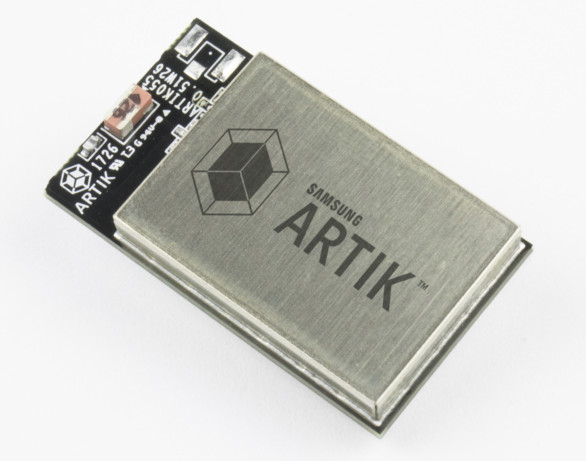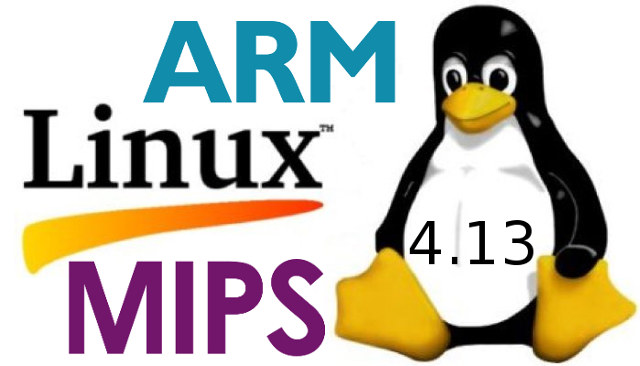Samsung has made several announcements with IoT, especially IoT security. First, Samsung ARTIK 053, ARTIK 530 and ARTIK 710 modules are getting an “s” version, which stands for “robust security”, as well as a new ARTIK 055s module, and all ARTIK modules can now work with SmartThings Cloud uniting the company’s existing services – ARTIK Cloud and Samsung Connect Cloud – into a single IoT platform. Separately, the company announced their Secure Element solution which combines eFlash memory and new security software. Samsung ARTIK “s” modules & ARTIK 055s The company explains in their blog that ARTIK 053s, 530s, 710s, and the all new 055s will feature “advanced protection, integrated cloud services, and hosted security services with “enhanced ARTIK end-to-end security by providing greater protection for IoT data as well as prevention against hacking”. The press release is a little more specific: ARTIK secure IoT modules provide a strong root […]
Geolocation on ESP8266 without GPS Module, only WiFi
When I think about geolocation in I normally think about global navigation satellite systems such as GPS, GLONASS, Galileo, or Beidou, as well as IP geolocation, but the latter is highly inaccurate, and often only good for find out about the country, region, or city. But if you’ve ever been into your phone location settings, you’d know GPS is only one option, as it can also leverage cellular base stations and WiFi SSIDs, where the former working where there’s coverage, and the later in area with a high enough density of access points. Somehow, I had never thought about using such technology to find location with WiFi modules until Espressif Systems released an application note entitled “Geolocating with ESP8266“. This document describes how the ESP8266 module may be used to scan for nearby Wi-Fi access points and, then, use their SSID, RSSI and MAC address to obtain a potential fix […]
Secure96 is a 96Boards Mezzanine Expansion Board To Experiment with Hardware Based Security
With the Internet of things booming and taking a more important role in our lives, security will become more and more critical. So far, it has often been an afterthought with modems & routers frequently shipping with default username and password, and getting security right is really hard, as shown by the recent CLKSCREW attack that somehow leverages DVFS to break ARM TrustZone security, and that “is not a software bug, nor a hardware bug, it’s a fundamental part of the energy management design”, so most ARM platforms are vulnerable. Optimal security normally combines software and hardware, so having a platform to experiment with different HW security solutions would be useful, and that’s what Secure96 Mezzanine board for 96Boards aims for. Secure96 expansion board specifications: Security ICs Microchip Atmel ATSHA204A SHA-based CryptoAuthentication crypto element device Microchip Atmel ATECC508A crypto device with ECDH (Elliptic Curve Diffie–Hellman) key agreement Infineon SLB 9670 TPM […]
Linaro Connect SF 2017 Welcome Keynote – New Members, Achievements, the Future of Open Source, and More…
Linaro Connect San Francisco 2017 is now taking place until September 29, and it all started yesterday with the Welcome Keynote by George Grey, Linaro CEO discussing the various achievements since the last Linaro Connect in Budapest, and providing an insight to the future work to be done by the organization. The video is available on YouTube (embedded below), and since I watched it, I’ll provide a summary of what was discussed: Welcoming New Members – Kylin (China developed FreeBSD operating systems) joined LEG (Enterprise Group), NXP added LHG (Home Group) membership, and Xilinx joined LITE (IoT and Embedded). Achievements OPTEE open portable trusted environment execution more commonly integrated into products. Details at optee.org. LEG 17.08 ERP release based on Linux 4.12, Debian 8.9 with UEFI, ACPI, DPDK, Bigtop, Hadoop, etc… LITE group has been involved in Zephyr 1.9 release, notably contributing to LwM2M stack More projects to be found […]
Wanscam HW0026 720p IP Camera Goes for $9.99 (Promo)
Wanscam HW0026 is a 720p IP camera with night vision, motion detection, and ONVIF 2.1 support that was launched in 2015, although they seem to have updated the model since then. GearBest now has a promotion for the US version of the camera for just $9.99 shipped. The version with the EU plug is sold for $15 shipped without any deep discount. Wanscam HW0026 IP camera features and specifications: Camera 720P HD resolution, 1.0MP 1/4 inch CMOS sensor, 1 – 25fps adjustable frame rate 90 degree wide angle FOV, 3.6mm lens Supports 10 LEDs for night vision with infrared distance up to 10m Motion detection up to 10 – 15m Video – H.264 codec, AVI container, NTSC or PAL standard. Storage – micro SD card up to 64 GB Connectivity 802.11 b/g/n WiFi Protocols – DDNS, DHCP, FTP, LAN, P2P, RTSP, TCP, UPNP Audio – Built-in mic and speaker, supports […]
Arm Research Summit 2017 Streamed Live on September 11-13
The Arm Research Summit is “an academic summit to discuss future trends and disruptive technologies across all sectors of computing”, with the second edition of the even taking place now in Cambridge, UK until September 13, 2017. The Agenda includes various subjects such as architecture and memory, IoT, HPC, computer vision, machine learning, security, servers, biotechnology and others. You can find the full detailed schedule for each day on Arm website, and the good news is that the talks are streamed live in YouTube, so you can follow the talks that interest you from the comfort of your home/office. Note that you can switch between rooms in the stream above by clicking on <-> icon. Audio volume is a little low… Thanks to Nobe for the tip. Jean-Luc Aufranc (CNXSoft)Jean-Luc started CNX Software in 2010 as a part-time endeavor, before quitting his job as a software engineering manager, and starting […]
MINIX NEO Z83-4 Pro Mini PC Review – Part 2: Windows 10 Pro
MINIX launched NEO Z83-4 Cherry Trail mini PC last year, but the company has now launched NEO Z83-4 Pro, an updated version with a slightly faster Atom X5-Z8350 processor, Windows 10 Pro (instead of Home), and a a VESA mount kit. I’ve already checked the hardware in the first part of the review, so today I’ll report my experience with Windows 10 Pro. Windows 10 Home vs Windows 10 Pro My main computer runs Ubuntu 16.04, and I’m only using Windows 10 during reviews… But so far all other mini PCs I tried came with Windows 10 Home, and NEO Z83-4 Pro is my first Windows 10 Pro computer. So I had to educate myself, and Microsoft website has a comparison between the two versions of Windows 10. Windows 10 Pro supports all features of Windows 10 Home, plus the following: Security Windows Information Protection – Formerly Enterprise Data Protection […]
Linux 4.13 Release – Main Changes, ARM & MIPS Architectures
Linus Torvalds has just announced the release of Linux 4.13 and a kidney stone…: So last week was actually somewhat eventful, but not enough to push me to delay 4.13. Most of the changes since rc7 are actually networking fixes, the bulk of them to various drivers. With apologies to the authors of said patches, they don’t look all that interesting (which is definitely exactly what you want just before a release). Details in the appended shortlog. Note that the shortlog below is obviously only since rc7 – the _full_4.13 log is much too big to post and nobody sane would read it. So if you’re interested in all the rest of it, get the git tree and limit the logs to the files you are interested in if you crave details. No, the excitement was largely in the mmu notification layer, where we had a fairly last-minute regression and […]










